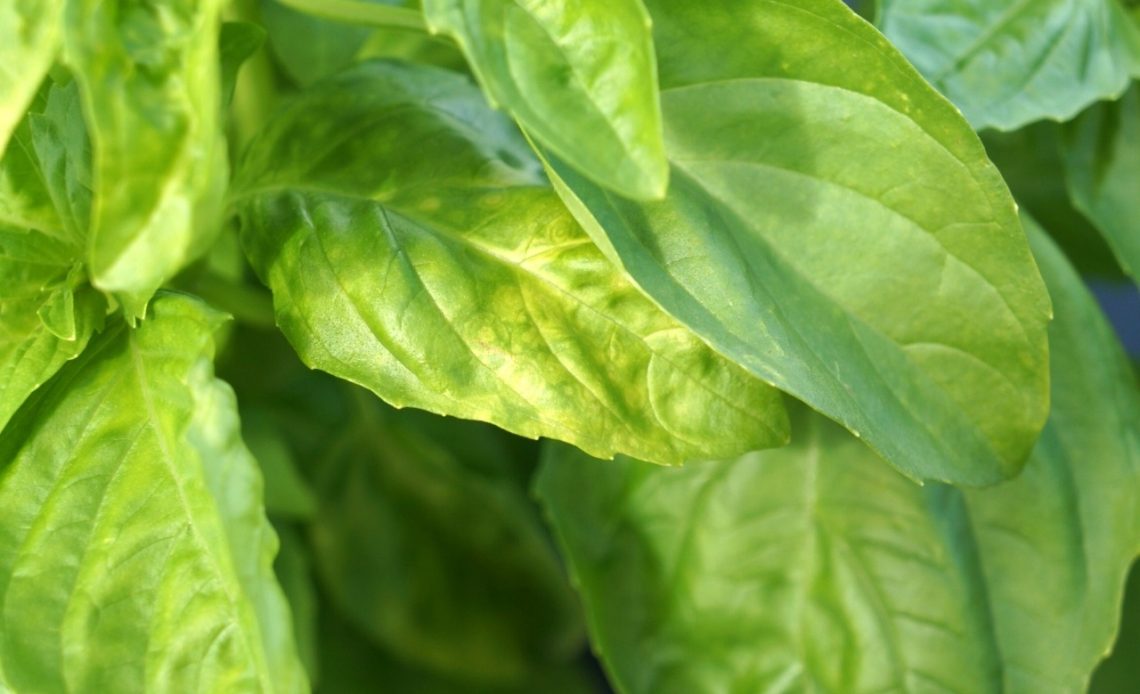

We’re here to help! Wild Yards is a completely free website that is 100% dedicated to helping you create a wildlife-friendly, sustainable yard. Read more
WildYards is reader-supported. When you buy a product through a link on our site, we may earn a comission. Every product is independently selected by our (obsessive) editors and our reviews are unbiased and objective. Read more about our mission or our privacy policy.
Basil is an aromatic herb that’s easy to grow when you know how – and can also make a fantastic companion plant in a vegetable plot. Sadly, for all its positives, basil can be extremely sensitive. Despite a fantastic growing season, you may wonder, ‘why is my basil wilting’?
Basil can wilt if it’s not getting enough sunlight, if it’s growing in a restrictive pot, or if you’re not giving it enough water. You may also find that basil can wilt and droop if it’s not getting pruned regularly and if it’s ‘shocked’ by sudden changes in temperature. Let’s look at how you can bring your basil back to full health.
What does basil need to grow?
Basil thrives in extremely moist, sunny environments – you’ll need to keep this herb growing in around an inch of water each week, depending on rainfall. It’ll need more water if you’re growing it via container, as there’s a greater risk of its soil drying up. Conversely, leaving basil to sit in water is never a good idea.
The good news is basil will fare well without much feeding (if at all) – you may only need to provide a little fertilization once a month. If you’re growing basil in nutrient-rich compost from your own bucket or bin, there’s potentially less need for feed.
Basil will also need pinching and pruning (as leaving it to propagate can contribute to wilting). Be sure to pinch leaves regularly once it has at least two fully-grown sets.
Looking after basil can be tricky at first if you’re new to gardening – it’s one of few plants that will need sun and moisture in equal measures.
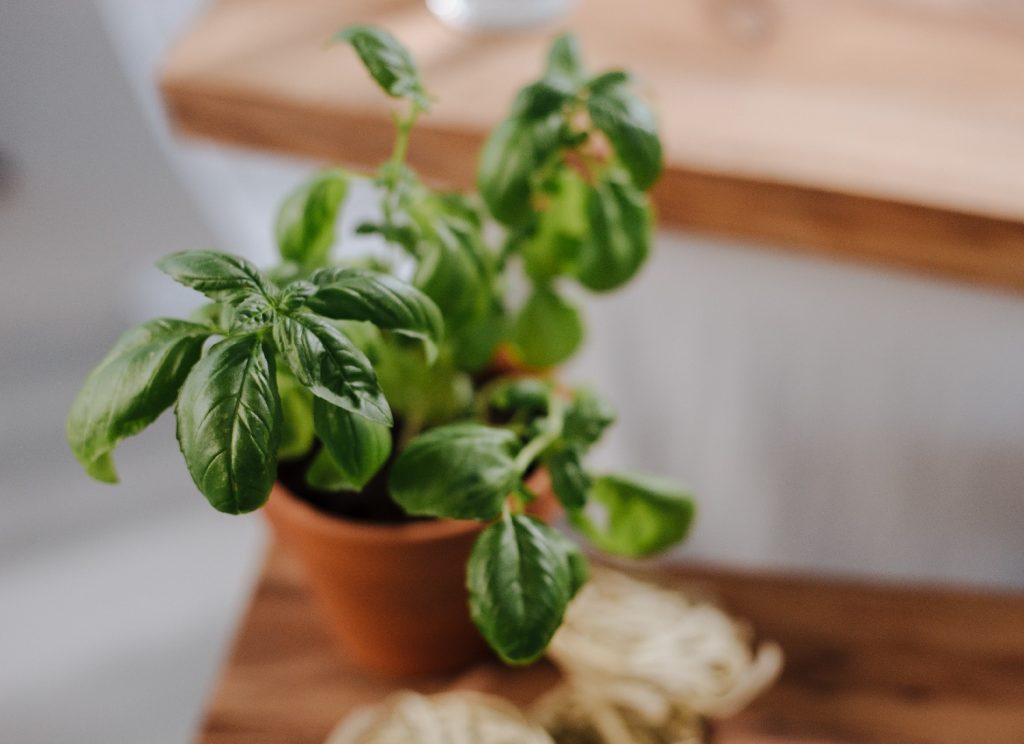
What does it mean if my basil is wilting?
If your basil is wilting, it’s likely a sign that something isn’t right in its care routine. The exception may be when you notice wilting towards the start of fall – when basil is likely to start fading for the winter ahead. Unless you take your plants inside, basil will usually die and go back to seed – it’s an annual.
Let’s dig deeper into what’s making your basil wilt.
You’re not watering it enough
Basil is a thirsty herb that will require watering at least once per week, providing your soil is aerated and drains through. It’s normally easy to spot if your basil is getting enough water by poking a finger into the top of its soil and checking if the top inch is dry. If your basil is wilting and it’s otherwise in full sunlight, under-watering is one of the most common causes of wilting.
To revive potted basil that’s especially thirsty, be sure to soak it until your pot drains water at the bottom. If the basil is planted directly in the soil, water heavily and repeat the one-inch trick – if the soil’s damp up to an inch, it’s likely got enough to soak up.
You’ll generally expect to revive under-watered basil within a few days of wilting. Keep the watering routine up for at least two days, and it should start to spring back to life – and you’ll then need to move it back into the full sun.
When watering your basil from here, always follow the one-inch method and ensure you do so at the base of the plant. Watering basil leaves is not only pointless; it’s conducive to infection and disease. If you can, try and water your herb in the morning so it’s got lots to drink as the day heats up. Watering around midday when the sun is at its highest is likely to be pointless as the liquid will evaporate.
You’ll typically find potted basil dries out faster if kept outdoors and may require a daily top-up of H2O.
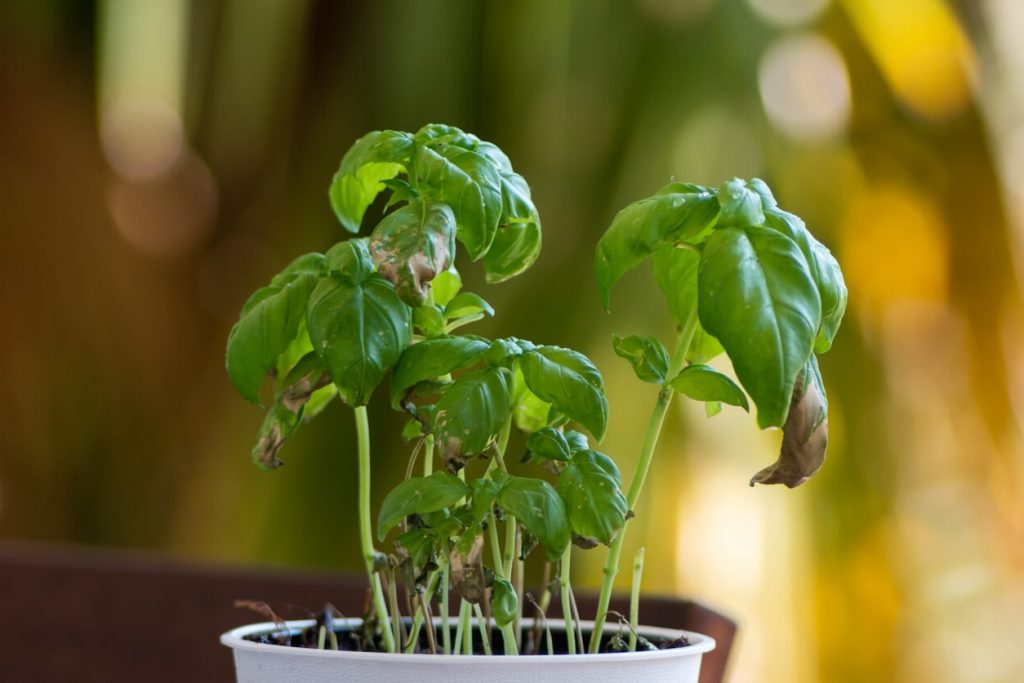
You’re overwatering it – or there’s not enough drainage
Conversely, basil will also wilt if there’s too much moisture – even though these plants adore the sunshine, if you’re too eager to keep it hydrated or don’t drain your pots enough, they will quickly droop. Yellow leaves- and even the first emergence flowers- are key signs that you’re watering basil too much. While basil flowers may look pleasant, they’re red flags for you to take action.
Take action by drying out the soil as much as possible before you water your herbs. A common mistake is to stick to a rigid watering schedule even when soil is damp – this will overwhelm your basil. Using the one-inch trick, only add water when the topsoil is dry.
If your basil’s soil is still damp after scaling your watering back, the problem’s related to drainage. If it’s in a pot, you’ll need to move it to a different container (doing so carefully – more on this below). If in soil, you may need to carefully remove your current topsoil and relay your growth medium, ensuring it’s aerated and drains clear when watered.
If you’re growing basil in a raised bed, it’s worth lining your bed with organic material such as leaves or stones to help ensure water runs clear.
Ultimately, soggy roots are unhealthy for your basil – as they won’t be strong enough to soak up the nutrients your plant needs.
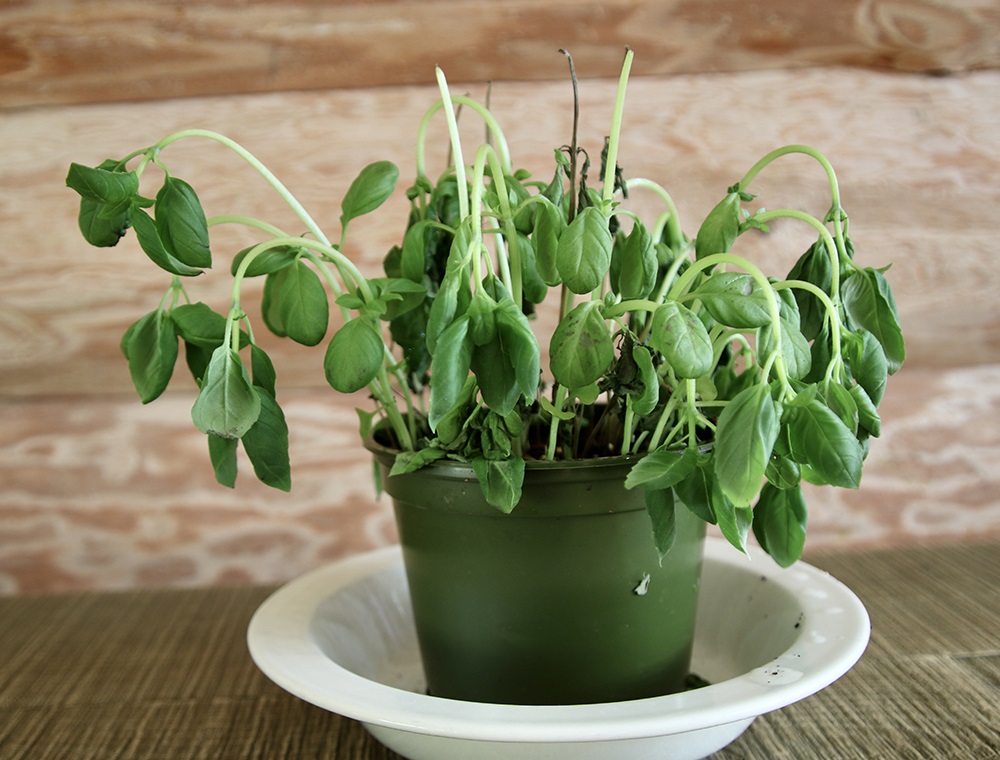
It’s suffering from pests
Basil is a great companion plant that can help other herbs and vegetables resist insect attacks – but unfortunately, it’s still at risk from some invasive pests. Aphids and mites, for example, will frequently eat away at sap basil produces – and you’ll also find slugs and beetles nibble away at its leaves.
Pests such as these may not cause wilt outright, but they can affect the overall health of your plant, meaning that it may not be able to produce more foliage in a weakened state. Consider growing companion plants such as chamomile alongside your basil, as this medicinal herb can help to stave off insects while preventing disease. Cilantro is a great companion for keeping insects and invasive pests off your basil, too.
Beyond choosing worthwhile companion plants for your basil, it’s prudent to remove bugs and pests by hand if you see them – or by using a natural pesticide – as chemical products will cause more harm to your plants and their soil.
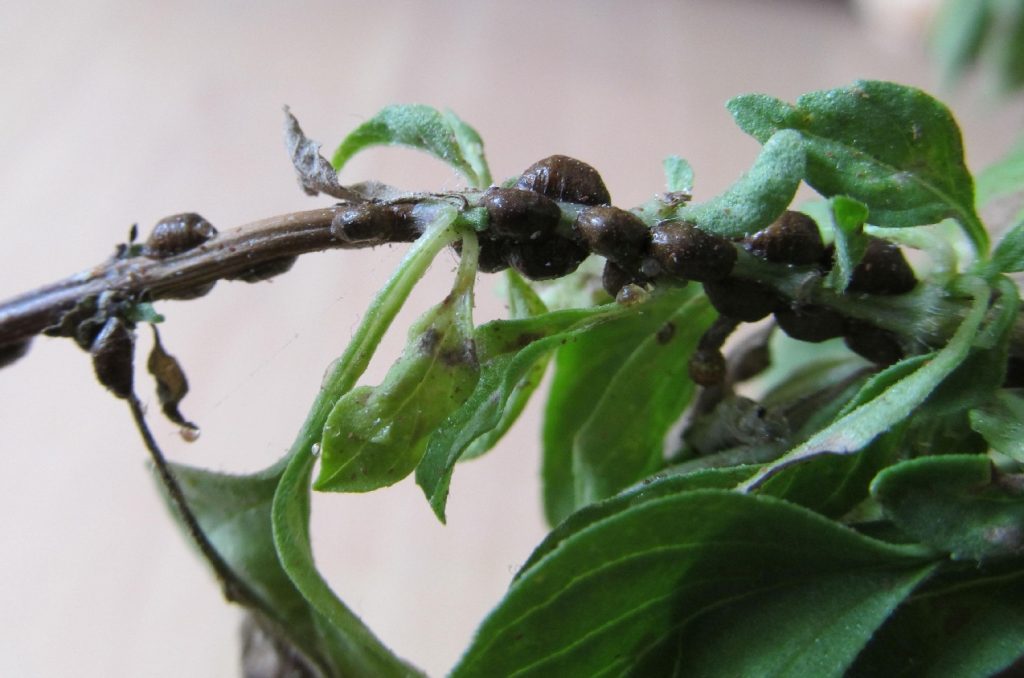
It’s not getting enough sun
Basil doesn’t cope well in the shade, and while it can suffer under very intense temperatures, you will need to keep it in full sunshine. Ideally, around six hours of full sun per day is optimal. If you’re following watering and drainage tips to the letter and are still noticing wilt, you’ll probably need to move it somewhere brighter in your garden.
Full sun can quickly evaporate water, meaning it pays to be vigilant regarding moisture. As the seasons pass, basil will start to naturally wilt and go to seed around the fall, when sunlight starts to dwindle. Don’t be too alarmed if you can’t save your basil around October time – though if you want to make the most of your herbs, you could move them inside and use a grow light in colder months to emulate the sun’s rays.
Basil can also get too much sunlight, meaning if its leaves start to crisp up or turn yellowish brown, it’s worth moving it somewhere a little less intense. Moving basil to full shade is never a good idea, as this can prove just as fatal to your plant in the long run.
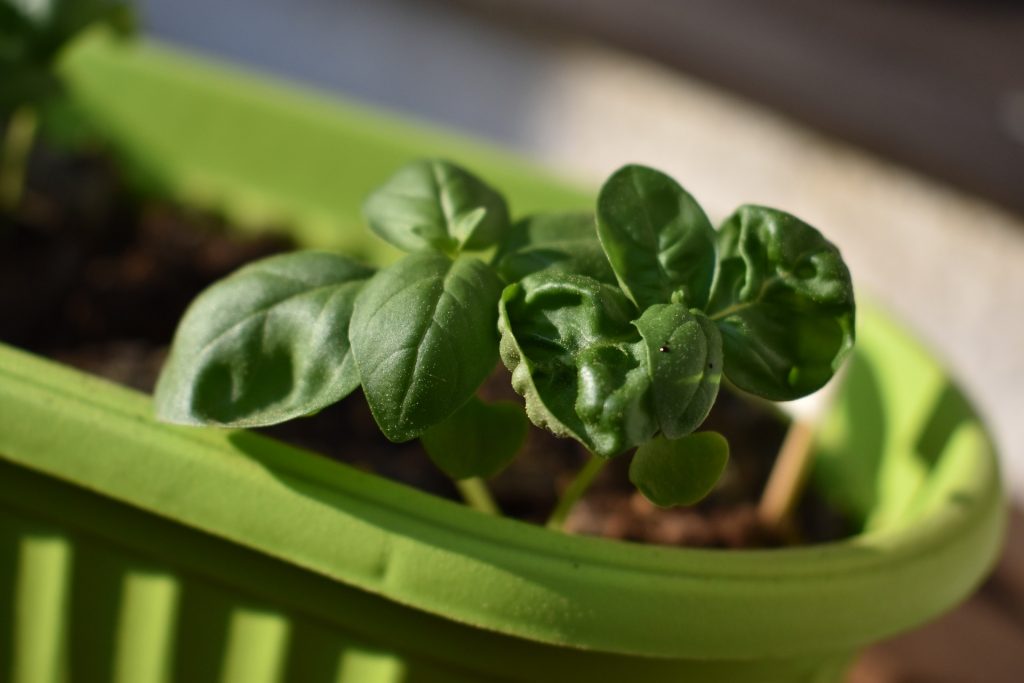
You need a different type of pot
Your basil may wilt if its pot is too small – the smaller the pot, the quicker the soil will dry out, especially as basil is a full-sun grower. Smaller pots you frequently find in garden centers won’t hold enough moisture to keep your basil growing strongly. Simply choose a bigger container, or opt to grow basil in the ground instead. Alternatively, you can grow basil with other plants in a raised garden bed, and it’ll likely perk back up within a few days.
It’s not impossible to grow basil in a small pot, but if you’re noticing wilt, it’s a sign it may need to move home. This also applies to some pot materials such as plastic and metal – as they tend to heat up faster and dry out your basil’s soil. Choose a terracotta or ceramic option, or plant directly in the soil.
You’ll also need to ensure your new basil pot is around 12 inches in diameter at the least – but the larger, the better.
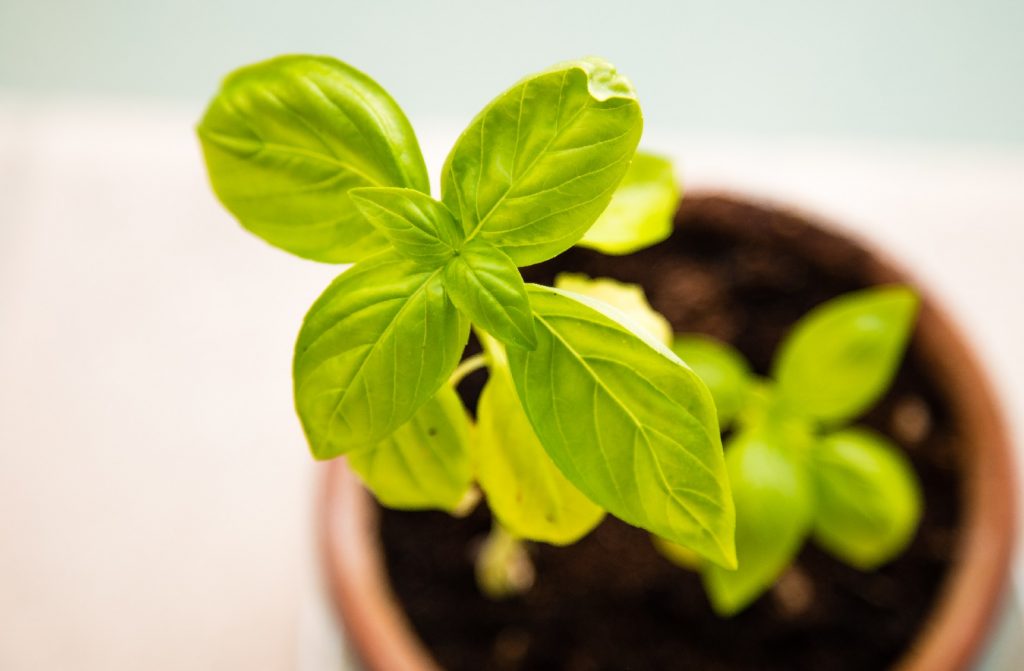
It’s contracted a disease
Basil can suffer from rot and mildew, both of which will cause it to wilt and even die sooner than you expect. As it’s fairly susceptible to some conditions, you may wish to be careful what you grow alongside it.
Downy mildew, for example, is a humidity-loving disease that creates fuzzy textures to basil leaves’ undersides and can even cause them to turn yellow and drop off. If you suspect this disease is causing wilt, remove affected leaves as soon as you can. It’s sadly one of several diseases that can’t be cured. This mildew also affects many other crops, such as cucumbers and squash.
Root rot is a common plant ailment that can cause wilting in basil, typically arising when its soil is too moist – if you start to notice yellow or brown leaves, make sure to let your soil dry out completely and then start watering again.
Be vigilant for fusarium wilt, which travels through the soil, gradually stunting roots and restricting basil’s growth. If your basil’s stems and tissue are discolored, it’s likely to be infected – and much like downy mildew, there’s no cure. Trim parts of the affected plant, and move it away from other plants if growing in communal soil.
A word of warning – fusarium wilt is a long-term problem – it can thrive in soil for over a decade. If you suspect other plants are affected, change the soil completely.
Leaf spot is easy to recognize – as its name suggests, this disease causes basil leaves to develop spots, which can eventually result in wilting and leaves falling off the plant outright. The best prevention for leaf spot is to water solely at the base and to never water over your leaves – its bacteria thrive on moist leaves and foliage.
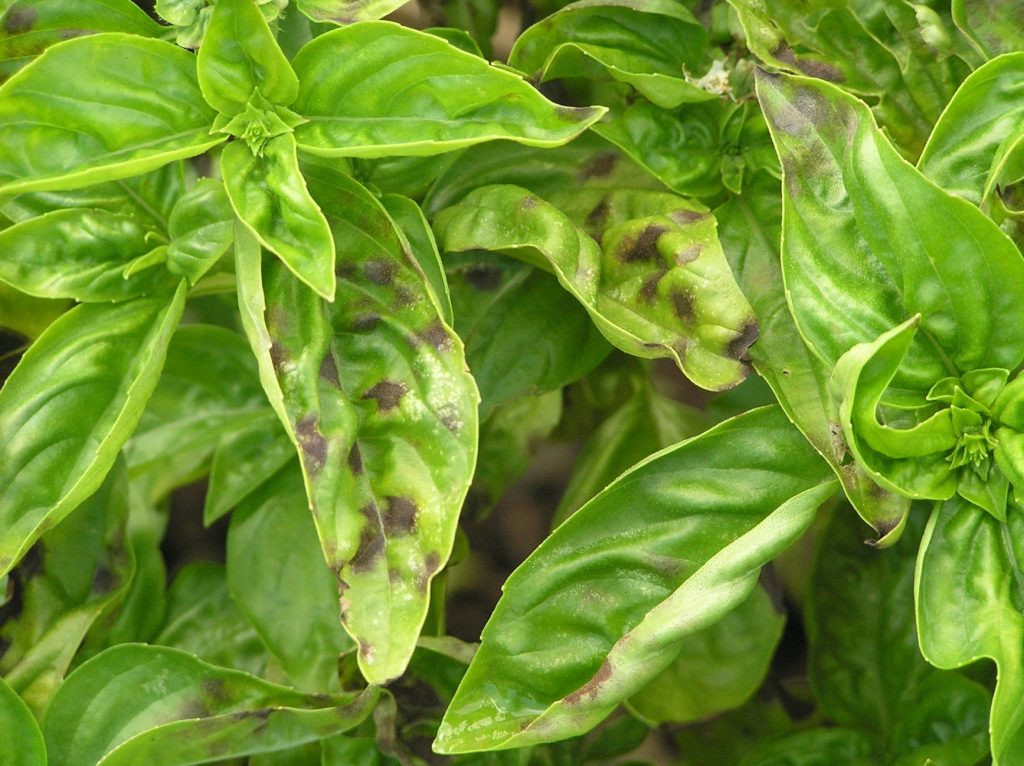
You’re not pruning it enough
Basil’s flowers are great for attracting bees and other pollinators to your garden, but believe it or not, your herb is likely to wilt if you let it flower too much. Flowering is a red flag for your plant going to seed, and while that’s to be expected from annual herbs such as these, you can keep your basil thriving with a regular pruning schedule.
Pruning of basil should begin at around 8” in height – the maximum you should keep this herb growing to across the sunnier seasons. If you can, focus on cutting back the leggier stems that emerge – as this can ensure weaker parts of the plant benefit from a new lease of life.
You should ideally prune from the top of your basil plant downwards, creating a bushier look that allows sunlight to travel down towards leaves that may be overshadowed.
The perfect basil pruning schedule is around twice a month – but depending on the species you’re growing and the location you plant it in, this frequency may vary. It’s worth sticking to a once-every-two-week schedule to begin with and to note any growth deviation.
If you cut as much as half the height of your basil off during pruning, it won’t take more than a couple of weeks for new leaves to start sprouting, effectively curing wilt.
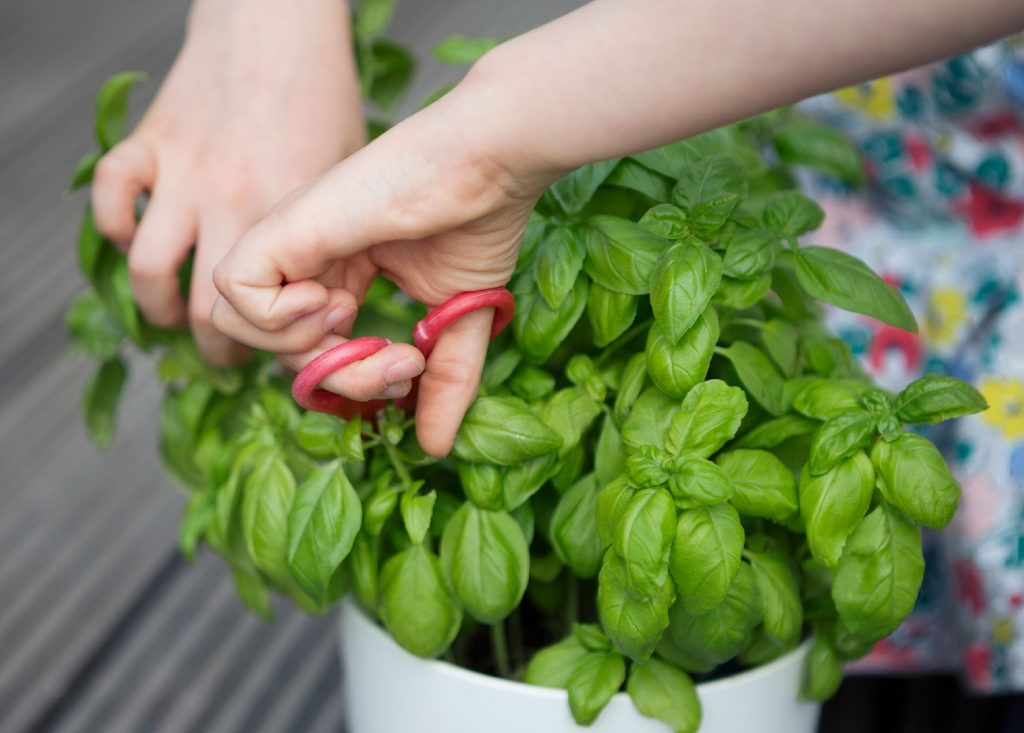
It’s suffering from a change in temperature
Basil will generally thrive in soil that’s between 50 and 70 degrees Fahrenheit, but sudden changes in heat or cold can shock the plant, causing it to wilt. There’s normally little need to worry about temperatures dropping below this point overnight, but sudden changes in weather (particularly cold or freezing temperatures) can prove fatal in the short term. Basil suffering from the deep freeze may start to wilt, and its leaves can curl.
It’s worth trying to cover your basil with a container or box if you can when cold temperatures are likely to set in temporarily. It’s most likely you’ll experience these spells during spring depending on your location. Vigilance is vital here, as temperatures don’t have to be at a literal freezing point for your basil to suffer. If you spot any wilted leaves that have suffered from cold stress, make sure to prune them off at the earliest instance – this will help your plant to start growing back new foliage that’s stronger and healthier.
While basil loves sunlight, extremely hot temperatures can also prove fatal to this plant, if not causing wilt in the short term. As discussed, choose a pot type that doesn’t conduct heat (i.e., not plastic or metal) to reduce the chances of this situation occurring.
If your garden gets more than basil’s recommended six hours of direct sunlight each day, be sure to move it to somewhere with a little shade temporarily. At the height of summer, it may be prudent to move your basil throughout the day if temperatures skyrocket above 70 degrees Fahrenheit.
Early morning watering is a must if you know the weather is likely to get particularly hot in your garden – and as always, run your one-inch check to ensure your soil’s nice and moist. If you can’t do much to prevent temperature shock for your basil, be prepared to prune and nurse with extended water, as explained above.
High-temperature shock may also be offset with careful use of mulch, active or otherwise. Covering your soil can help keep it cool when temperatures peak, giving your basil a little extra defense against periods of unexpected heat. For example, you may consider growing oregano as a companion plant, as this will grow across your soil bed and allow basil to sprout up and thrive.
Alternatively, consider mulching flowers such as French marigolds, which can help to fight off bad worms in the soil such as nematodes – these pests munch through any roots they can find and may cause your basil further stress (proving fatal long-term).
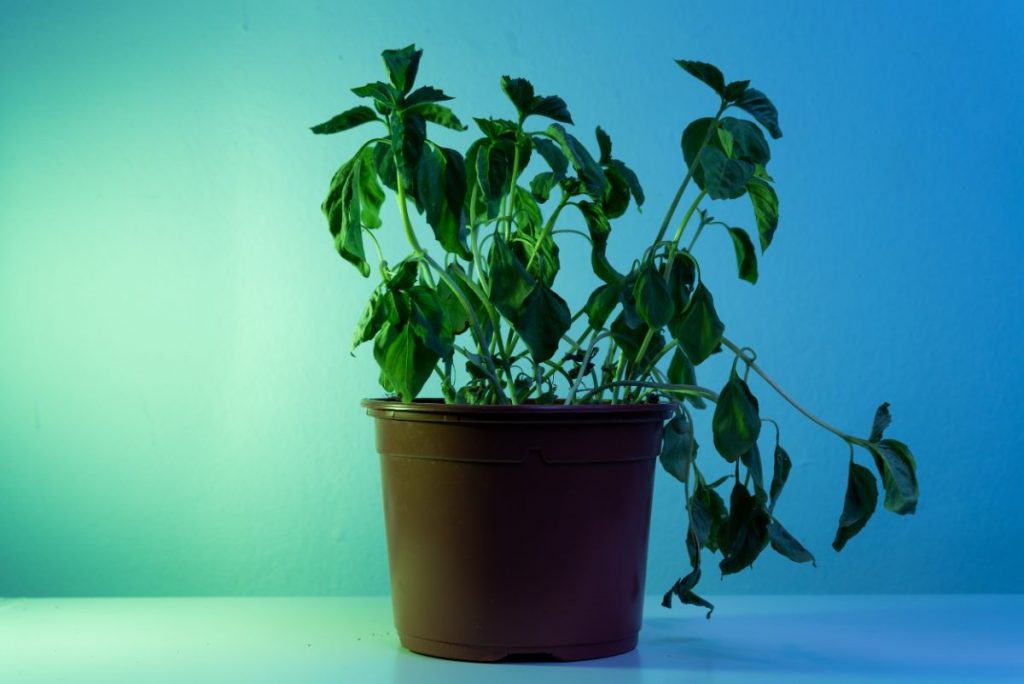
It’s been recently transplanted
Basil is a highly sensitive plant that may experience shock if it’s moved or transplanted from one extreme to another. For example, you may find that basil wilts from shock if you take an indoor specimen outside or if you choose to repot it in a new medium (such as in rich compost from general soil or from a smaller pot into a much larger, raised bed).
If your basil’s suffering from transplanting shock, the best thing you can do is allow it time to adjust. Simply ensure its soil and sun position are adequate and stick to a rigid watering schedule to ensure moisture is kept to an optimum. Within a matter of days, you’ll likely find basil leaves starting to pick up again.
The best action against transplant shock is, of course, to prevent it with gentle care. Moving your basil from a shady spot indoors into the full glare of the outdoor sun is likely to prove too intense for your plant. You may wish to carefully move indoor basil into part-shaded spots for a few days before giving your herbs the sunshine they otherwise demand. Basil is a plant that demands a lot of patience, particularly if you’re moving it around.
Crucially, don’t fertilize your basil during its transplanting period. Added nutrients are likely to over-stimulate the plant and may prevent it from getting accustomed to its new spot. This is likely the case, for example, if you move your basil into a new patch of soil – the aim is to ensure your plant can slowly acclimatize to its new home.
It’s very common for basil to start wilting if you purchase a specimen as-is from a garden center and take it home. For a week or so, you may find your basil takes time to perk up – it’s likely used to controlled growing environments, and you have no sure way of knowing how often it’s been fed and watered while growing at the center. It’s good to ask for advice from your retailer if you can, whether growing from seed or taking a grown specimen home.
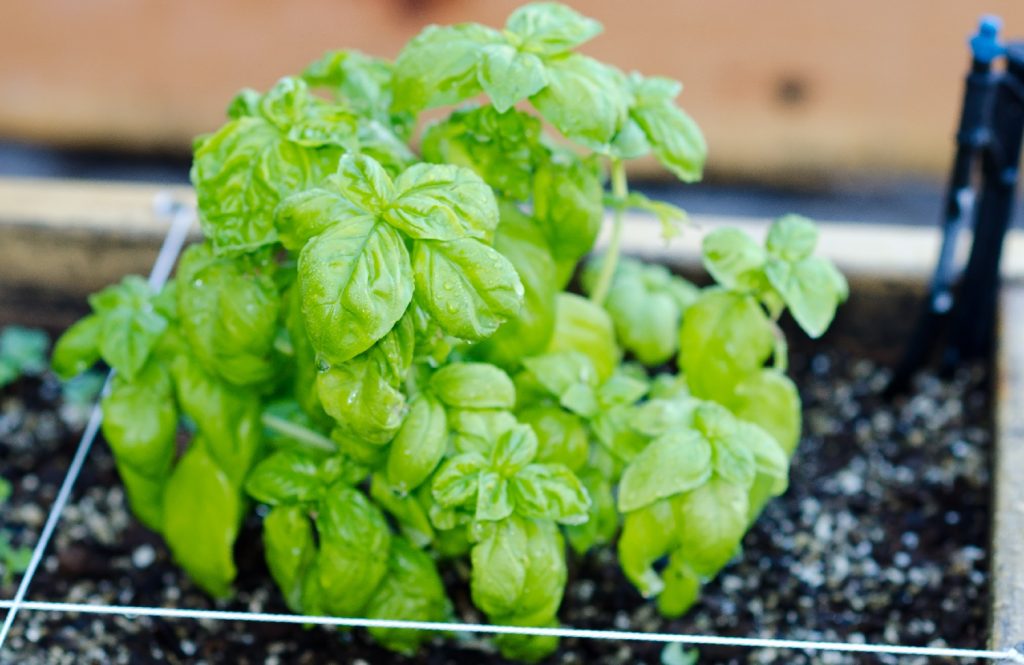
Is it easy to revive wilted basil?
In many cases, wilted basil simply needs a slight tweaking – whether to its sunlight levels, its watering routine, or the container you’re growing it in. Otherwise, you may find your basil wilts when you’ve just brought it home from the garden center – in which case, adequate care and time are the best cures for wilting.
Wilting basil is not rare in many gardens, and while adjusting to its needs can take time, this is a highly rewarding plant that’s a wonderful sight and a delicious addition to many dishes.
